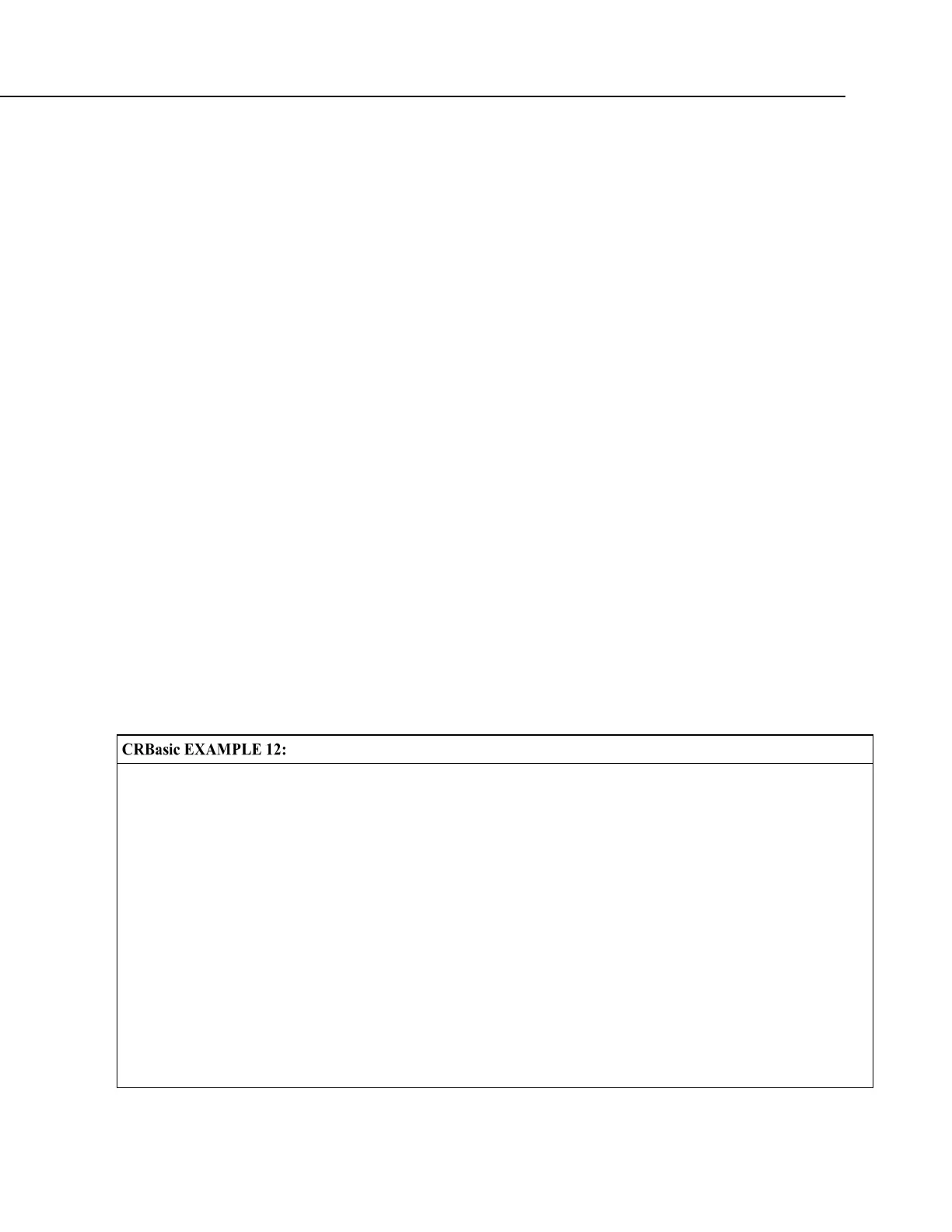Section 7. Installation
identifies the array index. For example, a variable named Values, which is
declared as a two-by-two array in the datalogger program, will be represented by
four field names: Values(1,1), Values(1,2), Values(2,1), and Values(2,2). Scalar
variables will not have array subscripts. There will be one value on this line for
each scalar value defined by the table. Default field names are a combination of
the variable names (or alias) from which data are derived and a three-letter suffix.
The suffix is an abbreviation of the data process that outputs the data to storage.
For example, Avg is the abbreviation for the data process called by the Average()
instruction. If the default field names are not acceptable to the programmer,
FieldNames() instruction can be used to customize the names. TIMESTAMP,
RECORD, Batt_Volt_Avg, PTemp_C_Avg, TempC_Avg(1), and
TempC_Avg(2) are the default field names in the table Typical Data Table
(p. 141).
The third-header line identifies engineering units for that field of data. These
units are declared at the beginning of a CRBasic program, as shown in CRBasic
example Declaration and Use of a Data Table
(p. 143). Units are strictly for
documentation. The CR800 does not make use of declared units, nor does it
check their accuracy.
The fourth line of the header reports abbreviations of the data process used to
produce the field of data. See the table Data Process Abbreviations
(p. 168).
Subsequent lines are observed data and associated record keeping. The first field
being a time stamp, and the second being the record (data line) number.
As shown in CRBasic example Declaration and Use of a Data Table
(p. 143), data
table declaration begins with the DataTable() instruction and ends with the
EndTable() instruction. Between DataTable() and EndTable() are instructions
that define what data to store and under what conditions data are stored. A data
table must be called by the CRBasic program for data storage processing to occur.
Typically, data tables are called by the CallTable() instruction once each Scan.
Declaration and Use of a Data Table
'This program example demonstrates declaration and use of data tables.
'Declare Variables
Public Batt_Volt
Public PTemp_C
Public Temp_C(2)
'Define Units
Units Batt_Volt=Volts
Units PTemp_C=Deg_C
Units Temp_C()=Deg_C
'Define Data Tables
DataTable(OneMin,True,-1) 'Required beginning of data table declaration
DataInterval(0,1,Min,10) 'Optional instruction to trigger table at one-minute interval
Average(1,Batt_Volt,FP2,False) 'Optional instruction to average variable Batt_Volt
Average(1,PTemp_C,FP2,False) 'Optional instruction to average variable PTemp_C
Average(2,Temp_C(),FP2,False) 'Optional instruction to average variable Temp_C
EndTable 'Required end of data table declaration

